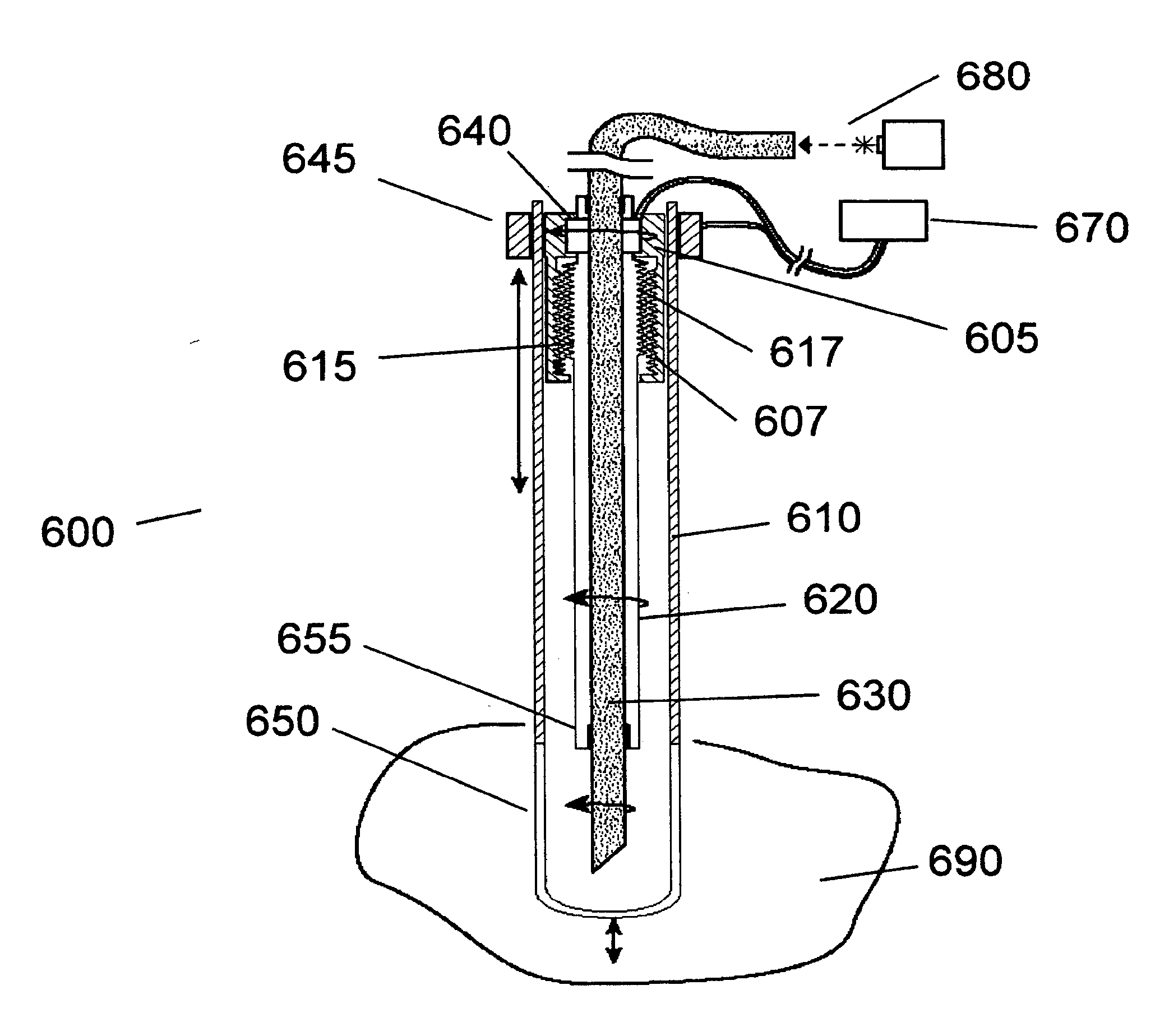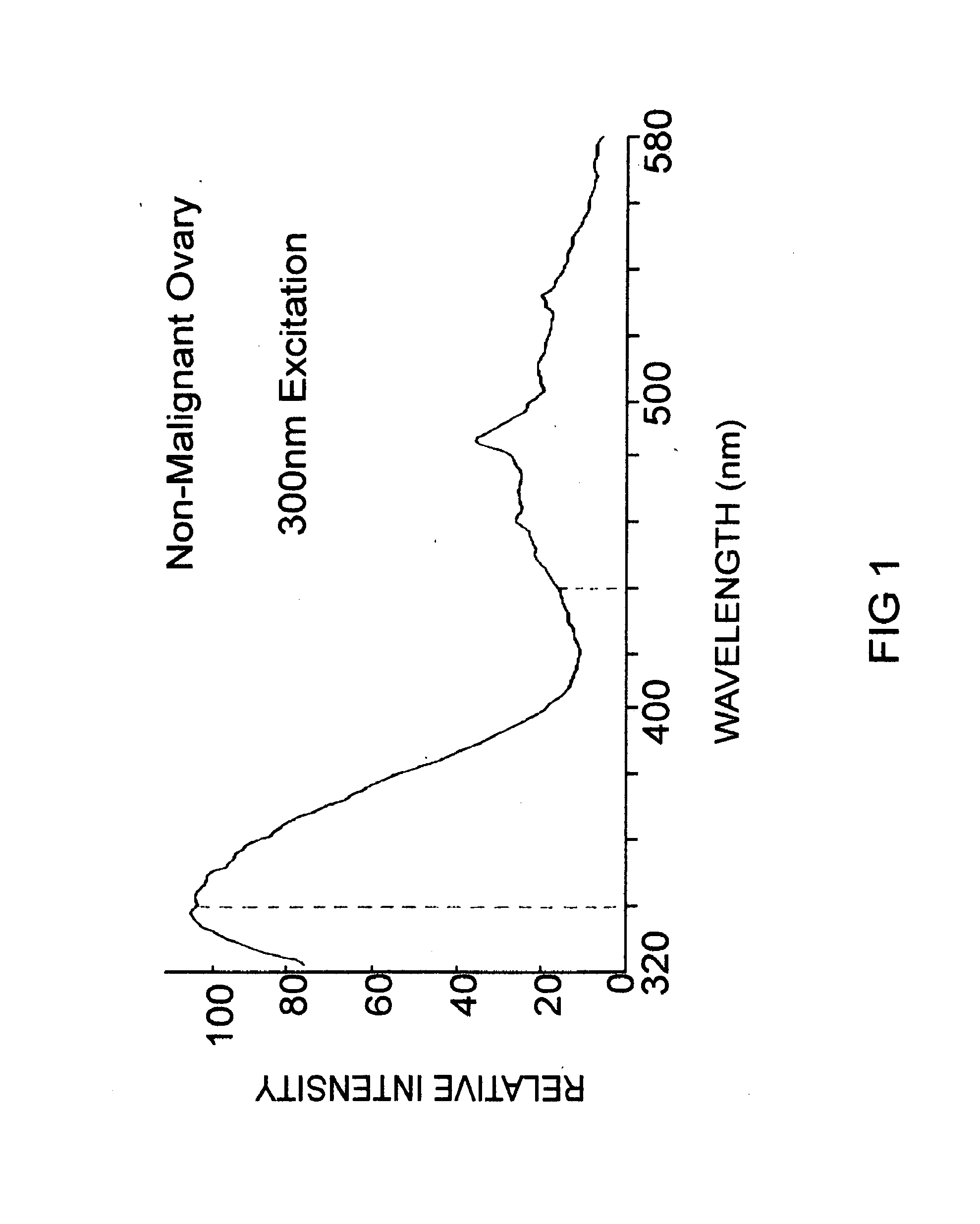Method and Apparatus for Cervical Cancer Screening
a cervical cancer and autofluorescence technology, applied in the field of cervical cancer screening systems and methods, can solve the problems of limited pathology resources in under-developed low sensitivity of pap smear, and inability to meet the needs of patients in resource-poor regions of the world, so as to reduce the overall cost or size of the system, and reduce the overall cost and cost of the overall apparatus.
- Summary
- Abstract
- Description
- Claims
- Application Information
AI Technical Summary
Benefits of technology
Problems solved by technology
Method used
Image
Examples
examples
[0104]Table 1 compares existing technologies that detect the threshold of high-grade cervical neoplasias (CIN 2, CIN 3, CIS, and Invasive Cancer). Included in the table are experimental methods based upon cervical tissue fluorescence. The Guided Therapeutics data are from FDA trials. The 300 nm data are from published reports, and represent the results anticipated for a BioProbe according to the current invention.
TABLE 1Summary of methods for the screening and diagnosis ofcervical cancer, together with the Guided TherapeuticsLightTouch ™ currently in FDA trials, and the300 nm Fluorescence Excitation method proposed herein.ScreeningImmediateMethodSensitivitySpecificityResult?Turn-AroundPap Smear151%97%No1-2 weeksColposcopy396%48%No2-4 weeksfor biopsiesPap + HPV195%27%No1-2 weeksGuided95%55%YesNoneTherapeutics2Pap + Guided95%65%No1-2 weeksTherapeutics1300 nm88-97% 88-97% YesNoneFluorescenceExcitation (Invitro)4-51Werner, c., W Griffith III, R Ashfaq, D Gossett, et. al., “Compariso...
PUM
 Login to View More
Login to View More Abstract
Description
Claims
Application Information
 Login to View More
Login to View More - R&D
- Intellectual Property
- Life Sciences
- Materials
- Tech Scout
- Unparalleled Data Quality
- Higher Quality Content
- 60% Fewer Hallucinations
Browse by: Latest US Patents, China's latest patents, Technical Efficacy Thesaurus, Application Domain, Technology Topic, Popular Technical Reports.
© 2025 PatSnap. All rights reserved.Legal|Privacy policy|Modern Slavery Act Transparency Statement|Sitemap|About US| Contact US: help@patsnap.com



